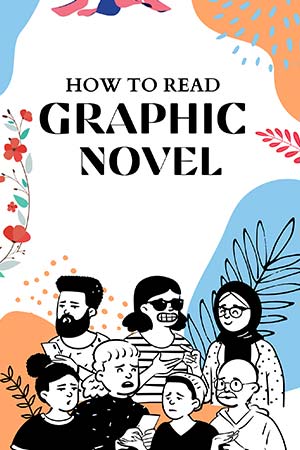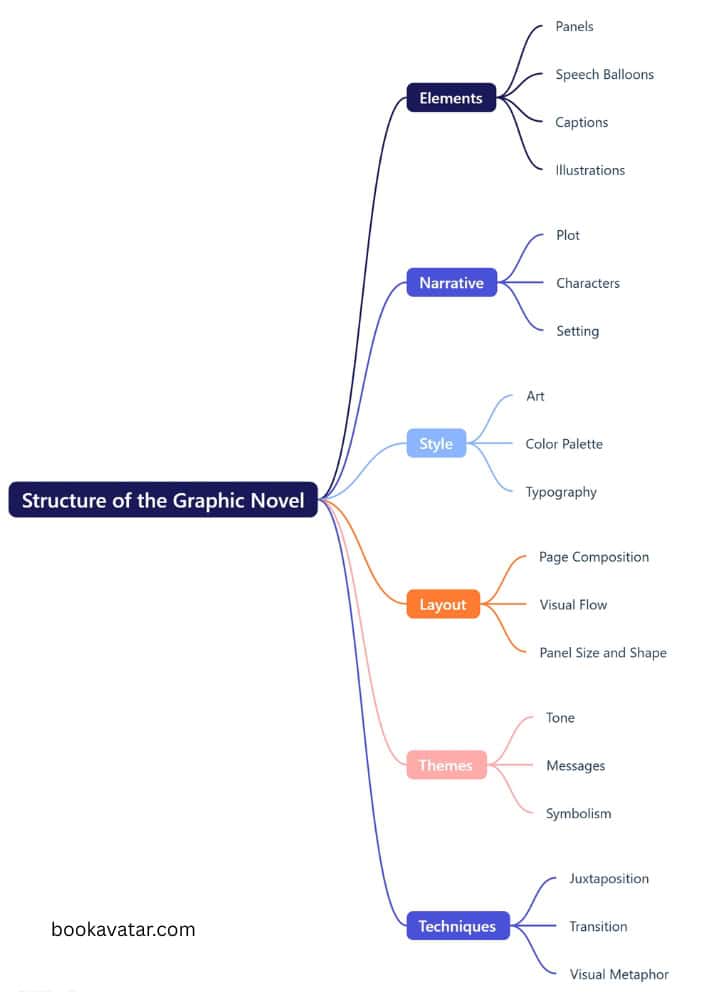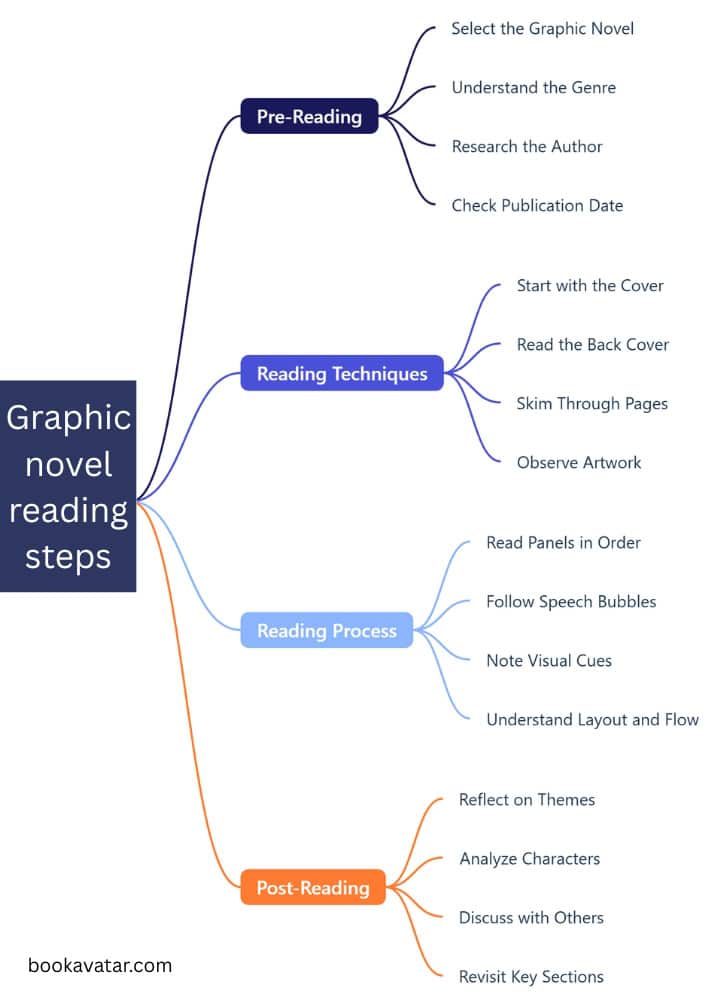
The graphic novel includes many genres: fiction, nonfiction, and anthologized work. They’re usually not a series of stories. William Blake was the first person to write a graphic novel in the 20s to the 60s when it first went from comic books to graphic novels.
You have to read them while they’re fun to read. They’re all the elements of a story. They keep you interested, and many people enjoy reading them who necessarily wouldn’t like reading. There are some rules and processes to reading a graphic novel. If you know them, then you will enjoy it and understand properly. So I will teach you how to read graphic novels and their structure.
What are graphic novels?
Graphic novels are fictional stories presented in comic-strip format and published. They are very similar and look very much like comic books. The typical differences that comic books are periodicals and serial. Comics come out every week, every month, something like that.
In comparison, a graphic novel is a one-time publication. Some are entirely fictional, very much like a novel, but some find themselves rooted in actual events.
Different types of graphic novels:
- Superhero story
- Magna
- Nonfiction
- Adaptations or Spinoffs
- Fantasy
- Personal narratives
Layout’s structure & elements of a graphic novel

Cover: The colorful hard binding page is the graphic novel’s cover, and then the parts on the inside are called the inside pages. All the pages on the inside are called inside pages.
Panels: The graphic novel panels are the boxes or segments that contain the image and the text.
Panels are the beating heart of a graphic novel. Think of them as snapshots in a movie—each one freezes a moment in time. Here’s how to navigate:
- Follow the flow: Start at the top-left panel, move right, then down (like reading a book). But artists LOVE to get creative! If you’re lost, look for “gutters” (the white space between panels)—they’re your breadcrumbs. 🍞
- Pause in the gutters: Your brain fills in the action between panels. Did the hero just teleport? Nope—your imagination did the heavy lifting! 🧠💪
Pro tip: If the layout feels wild (looking at you, Sandman), trace the panels with your finger. No shame here—I’ve done it. 🙈
Frame: The lines and borders that contain the panel.
Gutters: Gutters are the space between the panels. If you notice, the white space between the panels is called the gutter.
Captions: Captions are a box that contains any background information about a scene or characters.
Sound effects: The sound effects are the expression or feeling of the characters, and these are the visual sound cues. The language arts are often onomatopoeia: Growl! Smack!
Speech bubbles: This is the dialogue spoken by the different characters within a scene.
Graphic novels are a tag team of words and visuals. Here’s how to play:
- Speech bubbles: Read them like a script—top to bottom, left to right. Bonus: Jagged bubbles = shouting. Wavy bubbles = whispers. Cloud bubbles = inner thoughts. (Yes, it’s like decoding emojis.) 🔍
- Captions & sound effects: Don’t skip the “BOOM” or “SCRUNCH.” They’re the spice! Imagine Watchmen without “Rorschach’s growl”… tragic. 😱
- Art tells half the story: Notice colors, shadows, and character expressions. A single raised eyebrow can scream sarcasm louder than a TikTok comment. 😒
How to read a graphic novel? (Step-by-step process)
The graphic novel is usually one story that can be told in more than one volume and is more realistic. It could be historical or audio biographical, or even a memoir. Let’s start to read a graphic novel step by step.
1. Learn text track patterns
It would be best if you read text track patterns. The two big ones are the ideas of speech bubbles. This is where words come out into the piece.
- Direct speech: What do characters say?
- Callout: What characters are thinking?
- Jagged lines: What characters are shouting.
- Narration: Seen as voiceover without a bubble.
So if you have that speech bubble, that is a solid line that will be direct speech. It is what characters are saying themselves. If you have speech bubbles with clouds or little bubbles, that’s when you see what characters are thinking. They haven’t said them out loud. Like normally written novels, graphic novels also use the idea of narration. So at times, you will see that narration progressing the story. That is seen as a voiceover, usually without a bubble.

Reading steps: Look at the text box/callout. Start with the left corner and follow top to bottom. Your priority should be left and top box/callout.
2. Read actively
Reading graphic novels is similar to reading a short story, novel, etc. You need to agree to read actively for your purpose. If you want to enjoy the text, ensure you’re actively reading and getting out of the book. Try visual analysis by textual analysis. You need to make inferences and interpretations. Its pictorial doesn’t mean it’s inherently easier than a complicated classic novel from the romantic era. We, as readers, need to make inferences in all kinds of moments.
There are also times when we are forced to interpret the text, given many ideas. We have to come up with an interpretation where there could be many valid interpretations of a scene, a moment of a chapter, etc. But the bonus of reading a graphic novel is that we get added layers to help with our analysis.
Graphic novels aren’t a race. They’re a museum exhibit where you linger.
- First read: Skim for the plot. Who’s the hero? What’s the stakes?
- Second read: Geek out on details. Hidden symbols? Easter eggs? That tiny poster on the wall? 👀 (Fun fact: In Persepolis, the background art whispers as much as the dialogue.)
- Third read: Just vibe with the art. You’ll catch new gems every time.
Confession: I’ve reread Maus 6 times. Still sobbing. Still learning. 🐭💔
3. Find a connection with the film
Draw a connection for a second with the film. Every film has three levels:
- Literary
- Dramatic
- Cinematic
As you get into graphic novels, you have overlapped with all of those levels in the written word of a graphic novel. A film has in common with literature, setting, plot, characters, and archetypes. But then, as we take that book and make it visual, perhaps in live theater, that’s the dramatic level. So the same thing happens with graphic novels.
We don’t have words now but have pictures. As you can understand this structure for analyzing film, there is much overlap with analyzing graphic novels. Graphic novels have that great bridge effect between the written word and film.
- Memoirs: Fun Home or They Called Us Enemy hit harder than a therapy session. 🛋️
- Fantasy/Sci-Fi: Saga or Monstress will blow your mind and retinas. 🌌
- Literary: Blankets or Daytripper? Pure poetry with pictures. 📜
Hot take: If you hated one graphic novel, try another genre. It’s like swiping left on Tinder—there’s a match for everyone. 💘
4. Understand visual track patterns
Generally, we read graphic novels left to right and top to bottom. But sometimes, we have multiple levels that we need to get through. So we might go left to right, to a middle row, and then to the bottom. Or sometimes we get pages like the one on the right, with two panels.
To understand these graphic novels’ visual and text tracks, you must look at them fully. If you start with the visual track, you want to look at visual track patterns. It is where you get that dramatic level of film overlap because you can start to see things. Somebody has taken written words from a script, a play, or a novel and made them visual. So you can look anywhere you want.
You could follow the actors around who are being spotlighted. But you can also look in the back corner and see what that actor is doing over in the upper right and see what that actor is doing.
5. Examine the depth
Look at the background, which is at the back of our panels. The middle ground, which is a medium, and then the foreground. Usually, the most important things will be placed in the foreground of a panel. To examine that depth when reading graphic novels.
We have that nice overlap with film or cinematic level, examining framing choices and the grammar that inherently goes with those choices. Find what is framed and drawn in the box of a panel. The grammar is exceptionally important. It could be a cue to foreshadowing, a piece of a motif, but it’s drawing our attention to something very impactful. Most of the framing in film and graphic novels tends to be that medium shot, head to about knees.
Bonus tips – View characters from a different angle
The eye level’s most neutral camera angle looks directly at a subject. The camera looks up at a subject in film or a graphic novel. On the flip side, if we choose to film or draw something at a high angle, the camera is very high, looking down on something. It will create that power imbalance where whatever is framed at that high angle is weak or powerless.
The graphic novel is the idea from a Dutch angle. It is where the horizon has been tilted or canted or angled. So, in essence, it shows that the situation is emotionally unstable. There’s something nervous about the characters and situation. So take time, give the impression to the character and analyze the emotions to understand better.
Your Homework (I’m Nice Like That):
- Grab Heartstopper (fluffy) or V for Vendetta (revolutionary).
- Tag me on social with your first read—I’ll cheer you on! 🎉
Now go forth, brave reader! The panels await… 🚀
P.S. Still stuck? Slide into my DMs. I’ve got opinions about Batman. 😏
Download Pdf: Graphic novel reading tips step by step
Read more:
How To Read A Japanese Graphic Novel
How To Read Story Books Efficiently?
Table of Contents
